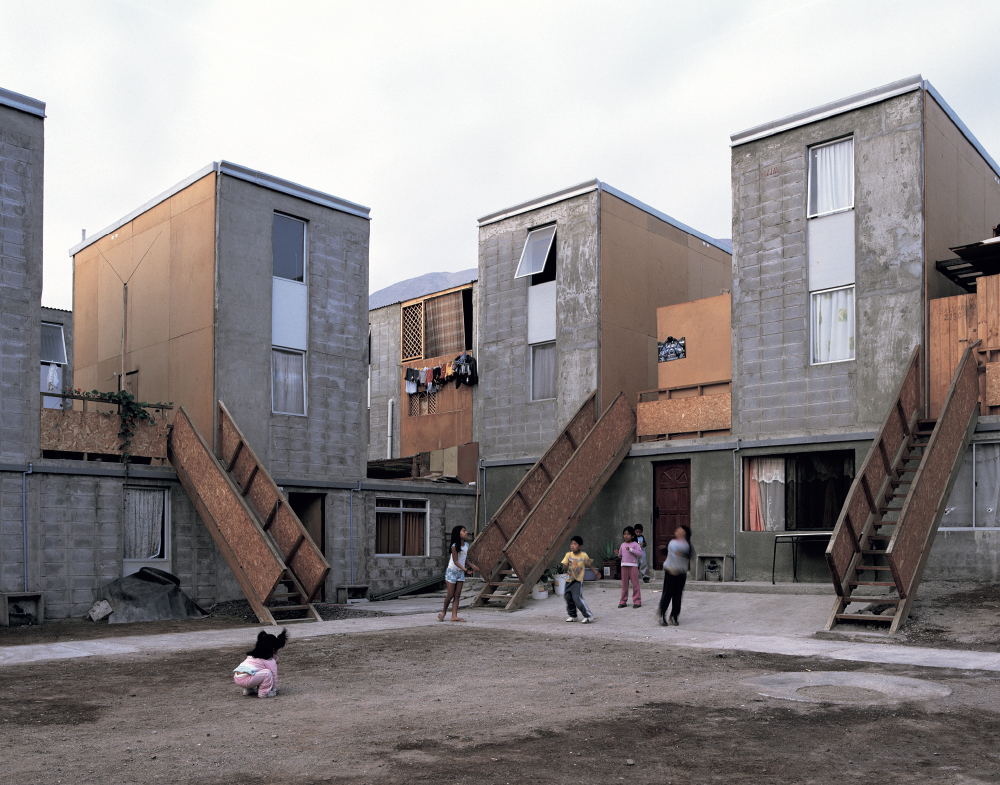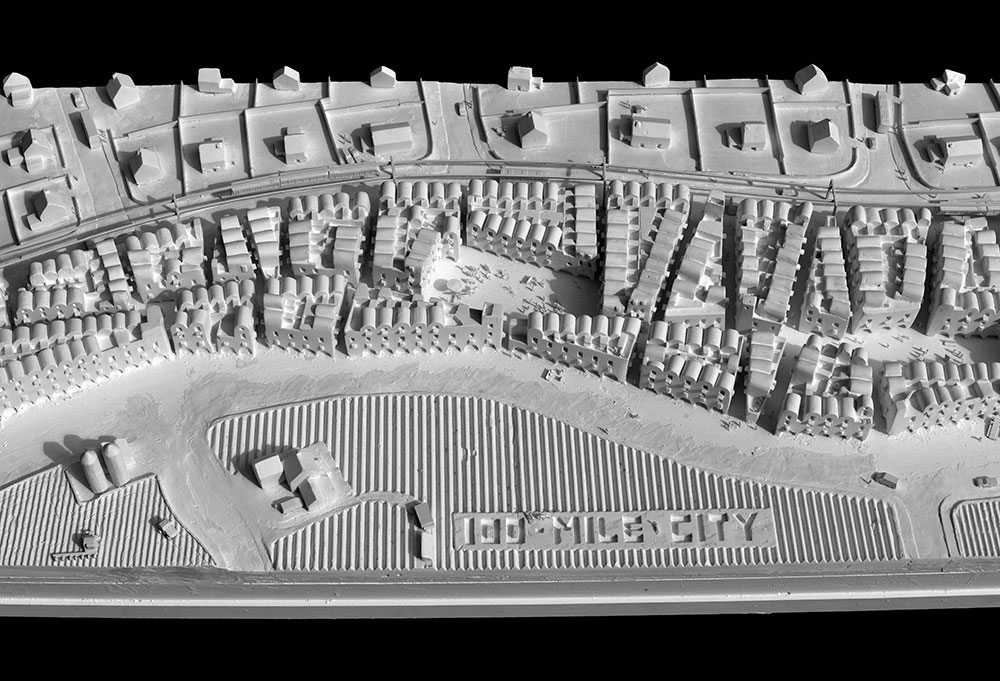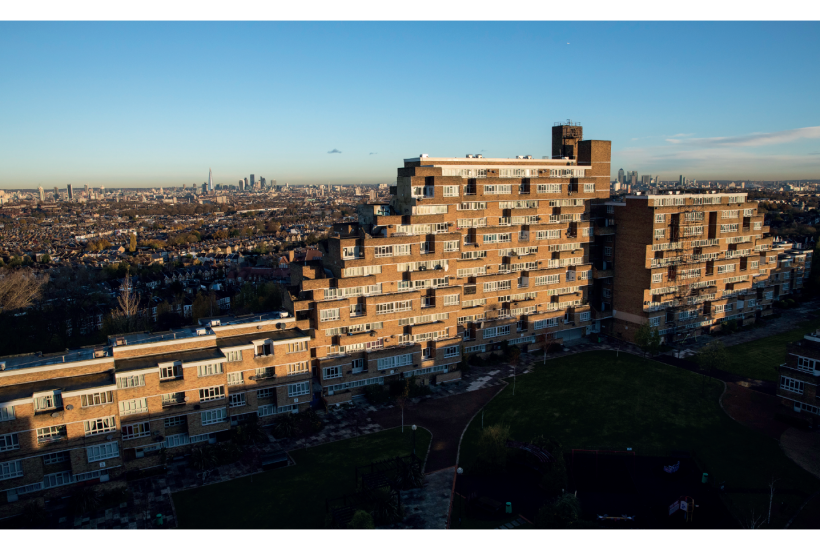‘We make our buildings, and afterwards they make us,’ Winston Churchill said in 1924 in a speech to the Architectural Association. This was flattery of the highest order, designed to butter up the audience of budding architects and inflate their sense of how much power they had to shape society. It’s remarkable then, 100 years later, how powerless architects have become when it comes to the biggest architectural crisis of our time: housing. According to the Royal Institute of British Architects, only 6 per cent of new homes in the UK are designed by architects. Everything else is dealt with by volume housebuilders, with the top three alone building 25 per cent of them, churned out from identikit designs.
Architects are salivating at the prospect of being in the driving seat of the government machine
In the niche architects are left with, making houses affordable has become the key focus. And architects are becoming cleverer at cutting corners to address this. One firm, OMMX, is working with developers to make home ownership cheaper by stripping houses down to the bare essentials. They’ll build out the basics – electricity, heating, a basic bathroom – and leave the residents to install the partitions, fixtures and fittings, according to their needs and tastes over time.
This is not a new approach, however. It’s almost become an architectural trope. In the 2000s, Chilean architect Alejandro Aravena, faced with tight public housing budgets, would boast of building ‘half a good house’ that would be expanded by residents themselves (see below). Even as far back as the 1930s, Berlin’s chief city planner Martin Wagner proposed the ‘growing house’ in the wake of the Great Depression.
 Alejandro Aravena’s housing development in Quinta Monroy, Chile. Credit: Cristobal Palma
Alejandro Aravena’s housing development in Quinta Monroy, Chile. Credit: Cristobal Palma
While superficially compelling, these semi-self-build routes feel like the architects admitting defeat, accepting their limited agency in the face of crushing economic forces and, under the cover of a feel-good marketing spin, selling what, in the end, are simply unfinished homes.
Some architects have retreated into the realm of speculation, with the green belt remaining an object of fantasy. Russell Curtis of RCKa Architects has suggested that publicly owned golf courses in Greater London, most of which are in the green belt, could support up to 120,000 homes. It’s a somewhat cynical land-raid on golfers that also neatly sidesteps the complications of brownfield development. Peter Barber, an architect known for his quirky, pseudo-Mediterranean housing projects, goes further.
Before ‘the Line’ – the gargantuan city being built in Saudi Arabia that’s shaped like a ruler – was even a twinkle in the Crown Prince’s eye, Barber proposed his own ‘hundred mile city’ that would encircle the inner edge of London’s green belt with a 200-metre-wide, four-storey ribbon of intense, mixed-use development, complete with its own monorail. The green belt’s original purpose as an enforced outer limit to London’s growth would be retained, while simultaneously providing millions of homes. These proposals are intentionally provocative. But with Keir Starmer dropping unsubtle hints about reviewing the sanctity of the green belt, architects might soon find outward expansion is a political possibility.
 A model of Peter Barber’s 100 Mile City
A model of Peter Barber’s 100 Mile City
Indeed, with a change of government in the air, and Labour pledging to build 1.5 million new homes, architects are banking on the next government to get back into the centre of the action. That said, the Tories have already left architects the parting gift of some potentially substantial planning reforms. To help build more beautifully, ‘design codes’ have been introduced and are now mandatory for all local authority areas. Urban designers will have the chance to shape these policies, codifying them into unequivocal, measurable visual rules for every part of England.
These codes perhaps intentionally evoke 18th-century pattern books, the Georgians’ favourite compilations of standard designs that ensured a stylistic consistency for the architecture that was to be built without architects. Now part of the planning system, these 21st-century pattern books aim to give communities their say on the architectural character of their neighbourhoods: from building types and heights to materials and colours. Beauty won’t just be in the eye of the beholder, but also in the code. New developments, from bespoke houses to volume housebuilding, would then at least be consistent, if not beautiful.
Design codes also contain a radical idea to accelerate housing development: follow the rules, the government is saying, and planning permission will be guaranteed. No more delay, doubt or discretion in the process. This is why these codes will probably outlive this government. For Labour’s vision of a Britain of ‘builders, not blockers’, any steps towards a planning system based on straightforward directives, not whims, is a step in the right direction. Indeed, the party’s idea of a ‘planning passport’ is a design code in all but name.
Design codes, however, can become a double-edged sword, with aesthetics first on the chopping block in the face of ambitious housing targets. Labour’s plans for ‘fast track approval and delivery of high-density housing on urban brownfield sites’ might well lead to a design code that encourages people to build skyscrapers next to stations.
The Tories have left architects the parting gift of some potentially substantial planning reforms
Yet for architects, a return to the golden age of council house-building remains the ultimate prize, back when prestigious municipal architects looked down on their peers in the private sector. To resurrect that spirit, architect Pooja Agrawal’s social enterprise Public Practice has been getting architects into local authority jobs. It’s perfectly timed for Labour’s expected hiring spree within planning departments. With Starmer pledging fresh ‘new towns’ and Angela Rayner the ‘biggest boost’ to council house-building for a generation, the ghost of Clement Attlee’s government is back – and architects are salivating at the prospect of being in the driving seat of the government machine.
But few are honest enough to lay out the radical politics needed to revive the council house-building boom. Kate Macintosh cut her teeth designing council housing for municipal architecture departments, including Dawson’s Heights estate, an imposing brick ziggurat in Dulwich, completed in 1972 when she was only in her twenties. Now in her eighties, she remains a firebrand on housing. In a panel discussion organised by the Architecture Foundation last month, she extolled the need for compulsory purchase powers at existing use values and a land value tax (a.k.a. development charge) to unlock public housebuilding; these are Attlee government policies, verbatim. While land taxes reek too much of Corbyn, if draft proposals are believed, Labour is indeed contemplating beefing up compulsory purchase powers nearer existing use values to deliver its vision.
Unlike Attlee, however, we have the benefit of hindsight. For every ‘new town’ unlocked by underpriced compulsory purchase, there was an Edward Pilgrim, the so-called ‘Macmillan’s martyr’, a working class tool-maker whose land was expropriated to build council housing by an apathetic bureaucracy that would make the Post Office blush. He was driven into debt and ultimately suicide, with the public outcry forcing a legislative U-turn back to paying market value. For every bit of unearned land profit taxed from speculative developers, there were overzealous bureaucrats who deemed new goalposts on an empty field a taxable ‘development’. And for every municipal monument like Dawson’s Heights, there was also a Ronan Point, where a rapidly but sloppily built council block collapsed like a house of cards after a gas explosion.
Many younger architects romanticise this bygone era when the profession was still powerful and their heroic utopias were indulged by taxpayer-funded municipal patrons – but they conveniently forget to look at the full unvarnished story. In firing up the big state apparatus out of haste, there’s a risk of bulldozing over civil-society solutions, from housing cooperatives to community land trusts. Architects should aspire to more than a simple numbers game of churning out council units to meet waiting lists. Instead, their attention should be focused on cultivating neighbourhoods where the inhabitants have the power to decide how they want to live. It’s slower work but the communities they create will last longer.<//>
Got something to add? Join the discussion and comment below.
Get 10 issues for just $10
Subscribe to The Spectator Australia today for the next 10 magazine issues, plus full online access, for just $10.
You might disagree with half of it, but you’ll enjoy reading all of it. Try your first month for free, then just $2 a week for the remainder of your first year.














Comments
Don't miss out
Join the conversation with other Spectator Australia readers. Subscribe to leave a comment.
SUBSCRIBEAlready a subscriber? Log in